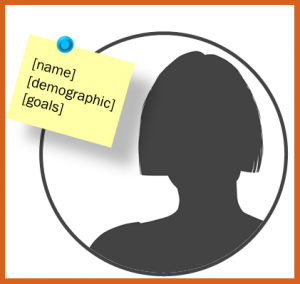3 Ways Marketing Automation Helps to Build Your Buyer Persona
 Implement successful marketing strategies and make the most of content-driven, scalable automation confidently through understanding your buyer persona. Marketing automation is a useful tool in gathering the analytics you need to build your buyer persona, strategically reach your target audience, and truly understand what they’re looking for.
Implement successful marketing strategies and make the most of content-driven, scalable automation confidently through understanding your buyer persona. Marketing automation is a useful tool in gathering the analytics you need to build your buyer persona, strategically reach your target audience, and truly understand what they’re looking for.
According to an article by Tony Zambito, thought leader on the topic, buyer personas describe “who buyers are, what they are trying to accomplish, what goals drive their behavior, how they think, how they buy, where they buy, when buyers decide to buy, and why they make buying decisions.” That’s quite a bit of information to gather. In the end, building accurate models of buying behaviors helps you to understand how your prospects expect and prefer to interact with your brand. Use marketing automation to build your buyer persona. Uncovering such knowledge will arm both sales and marketing teams with the information and assurance they need to seal the deal.
Integrate the Analytics
With features such as Lead Liaison’s Social Append, marketing automation allows you to gather data available from a variety of sources and channels and build a telling profile of your ideal prospect. Not only will you understand their social interactions, but you’ll also have a grasp of how they expect to interact with your brand and product. Another useful way to implement the numbers and stats you’ve gathered is to sort your prospects: what actions were taken by you that won a prospect over? What were the signs that you were about to lose a prospect? Building out a thorough analysis of this data will help to create a persona based on previous experience that will ensure a successful plan for the future.
Work with the Sales Team
Get insights from the sales team to refine the personas. They’re the ones with the most direct contact with prospects, so take advantage of their findings. When using marketing automation to build your buyer persona, marketers and sales teams need to maintain a two-way communication plan so that they can nail down the specifics- what questions are your prospects asking during their buying process? What are their goals, or what are their company’s goals? What are the signs that a prospect is ready to buy? Productive lead tracking and nurturing can provide the data you need to see what action steps the marketing team is taking that lead to higher success and ROI in the sales interactions.
Create a Range of Different Personas
Don’t put all your eggs in one basket by creating and implementing just one persona. Recognize the common factors in your buyers’ decision-making process, and develop a few different personas that are testable. When thinking about a relevant range of personas, utilize customer surveys, case studies, and other tools and strategies already in place. Having a broader perspective allows you to try out various strategies to discover which works best.



